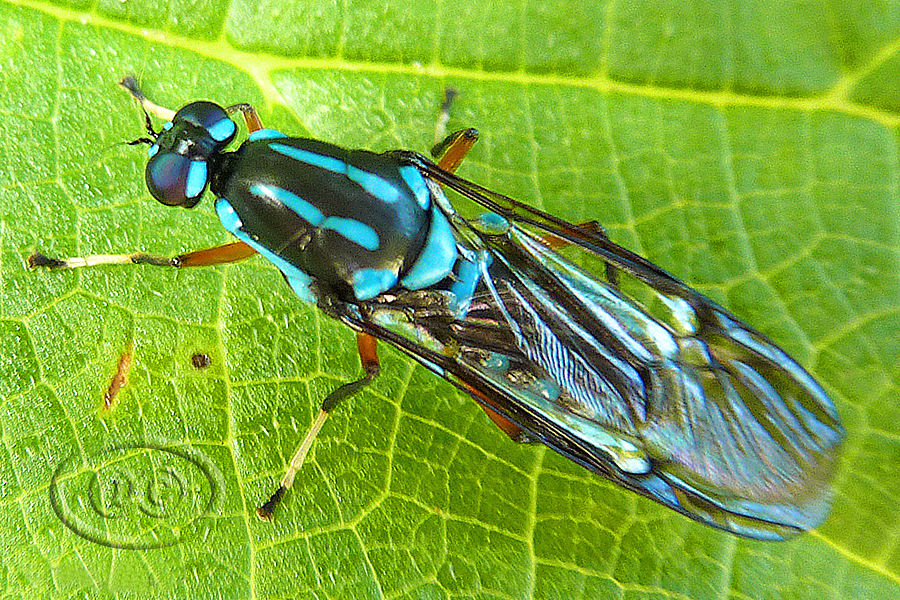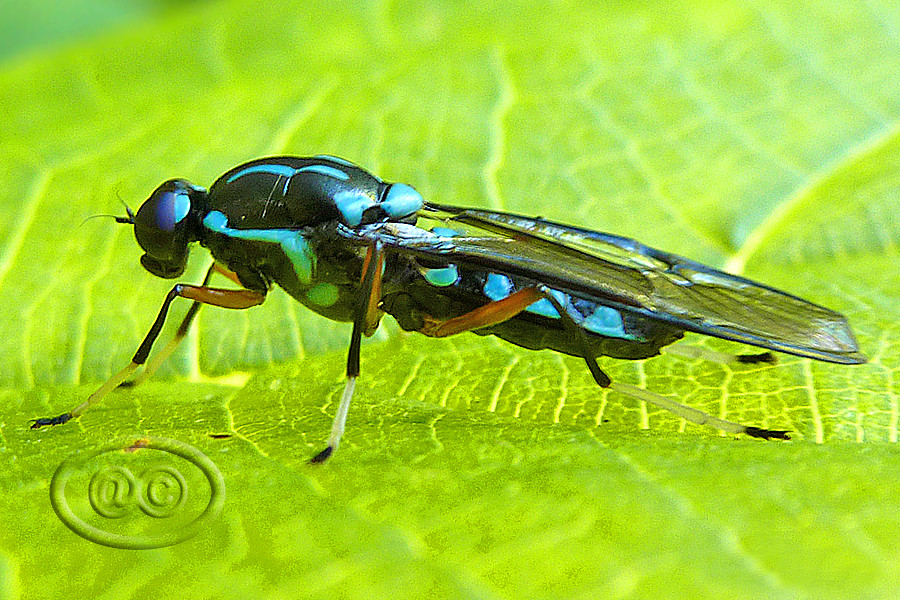Thread subject: Diptera.info :: Brazilian Stratiomyidae #2 - ID Help
Posted by Antonio Carlos on 28-11-2012 16:36
#1
Another
Stratiomyidae, that I belive to be a
Raphiocera sp., and would be great if someone could confirm its ID, as also, identify the fly of my thread "Brazilian Stratiomyidae #1", that until now was not replied.
Photo #1
 Coordinates of the place where I took this photo:
Coordinates of the place where I took this photo:
Latitude: -22.538442719452, Longitude: -43.228293657303
Date and time:
December 1, 2011 at 9.41.04am GMT+3
Photo #2
 Coordinates of the place where I took this photo:
Coordinates of the place where I took this photo:
Latitude: -22.538442719452, Longitude: -43.228293657303
Date and time:
December 1, 2011 at 9.41.44am GMT+3
Thanks for help!
AC
Edited by Antonio Carlos on 03-03-2016 00:08
Posted by Eric Fisher on 28-11-2012 19:48
#2
This beautiful fly is
Heptozus sp. It is on the cover of this book:
http://www.amazon.com/Manual-Central-American-Diptera-v/dp/0660198339 .
Posted by John Carr on 29-11-2012 03:12
#3
The antennae are different. Are they highly variable within
Heptozus? See thread 45072.
http://www.dipter...d_id=45072
Posted by Eric Fisher on 29-11-2012 08:38
#4
Ah, I didn't see that thread...thanks John. I need to follow ChrisR's advice and leave the strats alone!
I notice the coloration of the thorax is a bit different too. Since Steve Marshall's photo is ID'd as
Heptozus sp., I assume there is some variation among the two presently known species of this genus (MCAD: 543). But this same source does mention
Lysozus as a better alternative antenna-wise.
Posted by Antonio Carlos on 29-11-2012 16:03
#5
I found an article with nice pictures of this fly, where Diego Aguilar Fachin, from USP - Ribeirão Preto (SP) and João Paulo Morselli, from Department of Zoology, Insect Sistematic Laboratory, UNESP/Botucatu (SP), identified this fly as Raphiocera sp..
You can check the article here:
http://www.ra-bug...php?id=967
And the gallery with pictures here:
http://www.ra-bug...php?id=967
I would like to know what all of you have to say about this ID.
Thanks you all.
AC
Posted by John Carr on 29-11-2012 16:11
#6
I can see several minor differences in the fly in the article (different pale markings, C extended past tip of R5, indentation in dark patch at tip of R1 is triangular). I assume these make it a closely related species, but they could be sexual dimorphism, intraspecific variation, or even generic characters.
Posted by Antonio Carlos on 29-11-2012 19:51
#7
Thanks, John!
Now I see.
Posted by rlfalaschi on 02-02-2016 20:49
#8
Hi Antonio, the photos are not available...
Posted by Antonio Carlos on 03-03-2016 00:11
#9
rlfalaschi wrote:
Hi Antonio, the photos are not available...
Sorry!!
Now it is visible again.
Posted by Dmitry Gavryushin on 30-11-2016 16:27
#10
I'm inclined to consider this fly (as well as a similar Brazilian one elsewhere in the Forum)
Raphiocera armata (Wiedemann). Fits imho the description in James, 1943 (Ann.Ent.Soc.Am. XXXVI: 376 as
Basentidema coerulescens, sp.n.; synonymy in Pimentel&Pujol-Luz, 2001). Scape is not elongate so not a
Heptozus (extralimital as well). As far as I know
Lysozus Enderlein, 1914 mentioned here is a rather enigmatic genus.
Edited by Dmitry Gavryushin on 30-11-2016 16:27

